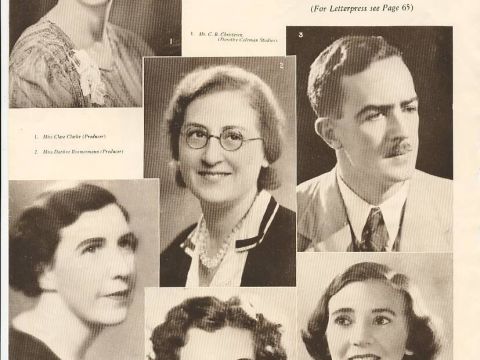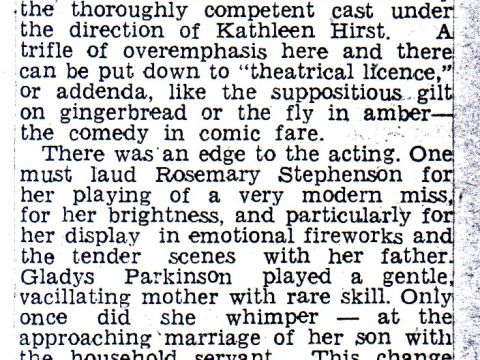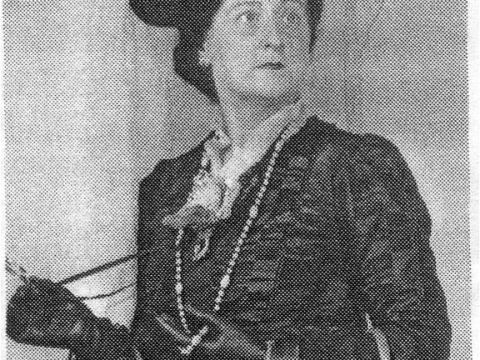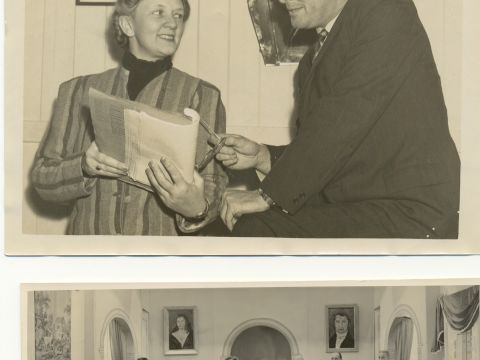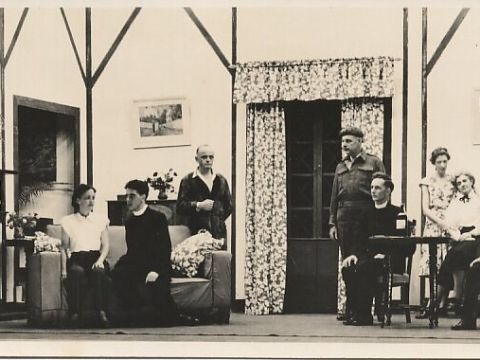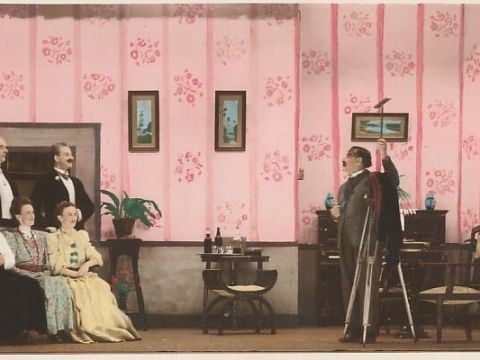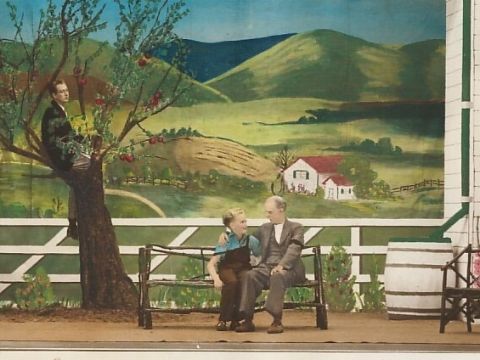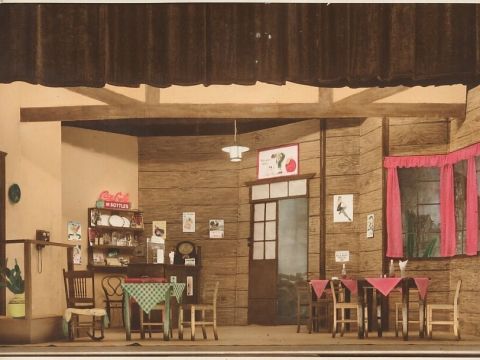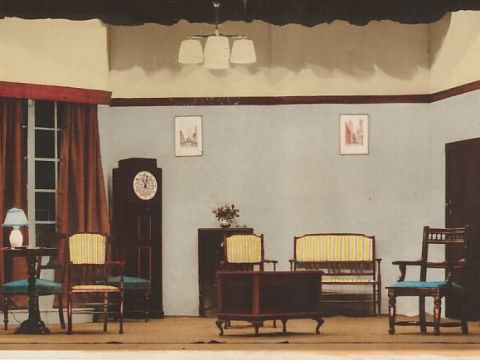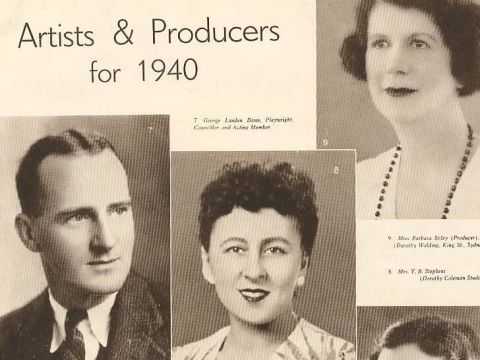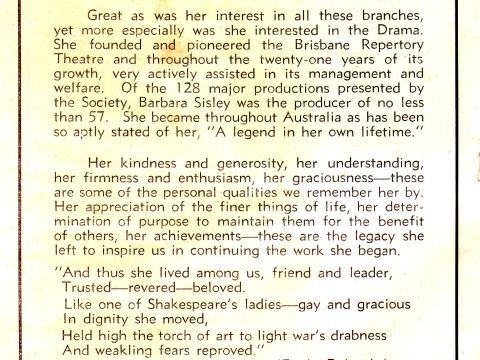Our History
The War Years

Top L to R: George Landen Dann, Babette Stephens, Barbara Sisley. Bottom L to R Noel Chandler, Ailsa Krimmer, Jean Jarrott.
Courtesy Fryer Library, University of Queensland.
From 1940 the effects of World War Two really began to bite. With President Stable absent on war-related duties, Honorary Treasurer Tom Stephens acted as chairman until, in January of that year, he had to inform the Council that “owing to military duties, he would not be available for any executive office this year”.[i]
Then, in December 1940, Professor Stable tendered his resignation as President, concerned that his on-going war commitments as Queensland’s Chief Censor gave him no time for the Society. [ii] The Council, keen to retain their influential President, reached a compromise position: Stable was to retain his position as President on Leave, and the Vice-President, Mr F.O.Nixon, was to act in his place for the year. The same thing happened the following year: despite Stable not having attended a single play or meeting and once more tendering his resignation, he was once again re-elected as President with Leave of Absence.[iii] Prominent General Council member, George Landen Dann was also temporarily lost to the Society because of military duties.
1942 was the most difficult of the war years. By then Brisbane was in the throes of an extraordinary level of wartime activity. With the war in the Pacific accelerating and a Japanese invasion of Queensland considered a real threat, General MacArthur, American commander-in-chief of the south-west Pacific, set up his headquarters in Brisbane – and suddenly this modest city resembled a full-blown garrison town. American troops poured into Brisbane, over one million by 1945, a reassuring presence on the one hand but a considerable social problem on the other. Violent clashes between Australian soldiers and American troops made city streets unsafe; racial differentiation between white and black American soldiers resulted in the latter being confined to the south side of the Brisbane River.
In this tense environment Repertory subscriptions plummeted to about seventy. Black-out conditions meant that people stayed away from productions in droves, to the extent that each play season was reduced to one night only. A Saturday matinee was tried, but without success. Yet such was the Society’s staying-power that each year during the war a season of six or seven plays was performed. Given that all amateur groups in Brisbane found casting increasingly difficult because of the shortage of men, for Repertory to have struggled along in this way was an impressive achievement.
On the bright side, 1942 was a watershed year in that the Society, after eight difficult years at the Princess Theatre in South Brisbane (by then an area ‘out of bounds’ to ordinary citizens), found itself a new theatrical ‘home’ – Albert Hall – a venue that suited its purposes and its audience so well that it stayed there for 25 years. An all-purpose, single story 720 seat theatre with adequate dressing rooms, Albert Hall was centrally located in the city next to the Albert Street Methodist Church. From the late 1940s it was also regularly used by Twelfth Night Theatre and Brisbane Arts Theatre. Leased by the Society until 1967, it housed every major Repertory season bar five, a total of 150 productions.
By 1943 an air of optimism was not unwarranted. After very poor attendances at Albert Hall in its first year, a membership drive, some relaxation of black-out conditions, and “the dates for the major plays … set down at about the time of the full moon”[iv] led to substantial box office increases. A more profitable year was experienced and Stable, back at the helm in 1944, was able to report:
The activities and the progress made in that period [1943], have been so encouraging that a feeling of optimism in the current year’s prospects is well justified. There have been several lean years, due to the war and other lesser reasons, during which the membership declined; but I am happy to state that a considerable increase in the number of members marks the year under review. The financial result … is most encouraging. … For the previous eight years the annual period has ended with an over-draft and some unpaid accounts. The year under review ended with an appreciable bank credit balance and no current debts.[v]
The good times continued in 1944 making it “the most successful year from a financial standpoint in the Society’s history”.[vi] During this period of stability and financial security, Stable decided that 1945 would be his last year in office and tendered his resignation, which this time was accepted.
However 1945 ended on a tragic note for the organisation with the sudden death of Barbara Sisley. Her accidental death on November 17, 1945 at the age of sixty-seven stunned the entire Brisbane arts community. Knocked down by a taxi in the centre of Brisbane on a Saturday night, she died the following day in the Brisbane General Hospital.
It’s not hard to imagine that the double blow of losing its long-standing Senior Producer and Council President within a few months of each other might have had a destabilising effect on Brisbane Repertory. Indeed, the loss was profound; but Sisley and Stable’s combined influence had created a robust organisation that had already survived the Great Depression and World War Two. Their legacy was a repertory theatre society that was highly regarded as a significant cultural entity in Queensland. The plays it produced, always true to Repertory principles, pleased the strong audience base of loyal members. It attracted talented amateur actors and directors, many from private speech and drama studios. And media interest in its productions, developments and controversies could always be relied on from major Brisbane newspapers.
By 1945 the Brisbane Repertory Theatre Society was so deeply embedded into Brisbane’s cultural life and affectionately regarded by so many people, that there was little doubt that the Society would continue to survive and develop post the Sisley and Stable era.
Writer: Christine Comans
#Gallery
#Have any photos to share?
We'd love to see your photos and publish them in our archive.
#Tell us your story
Does this article bring back some memories?
